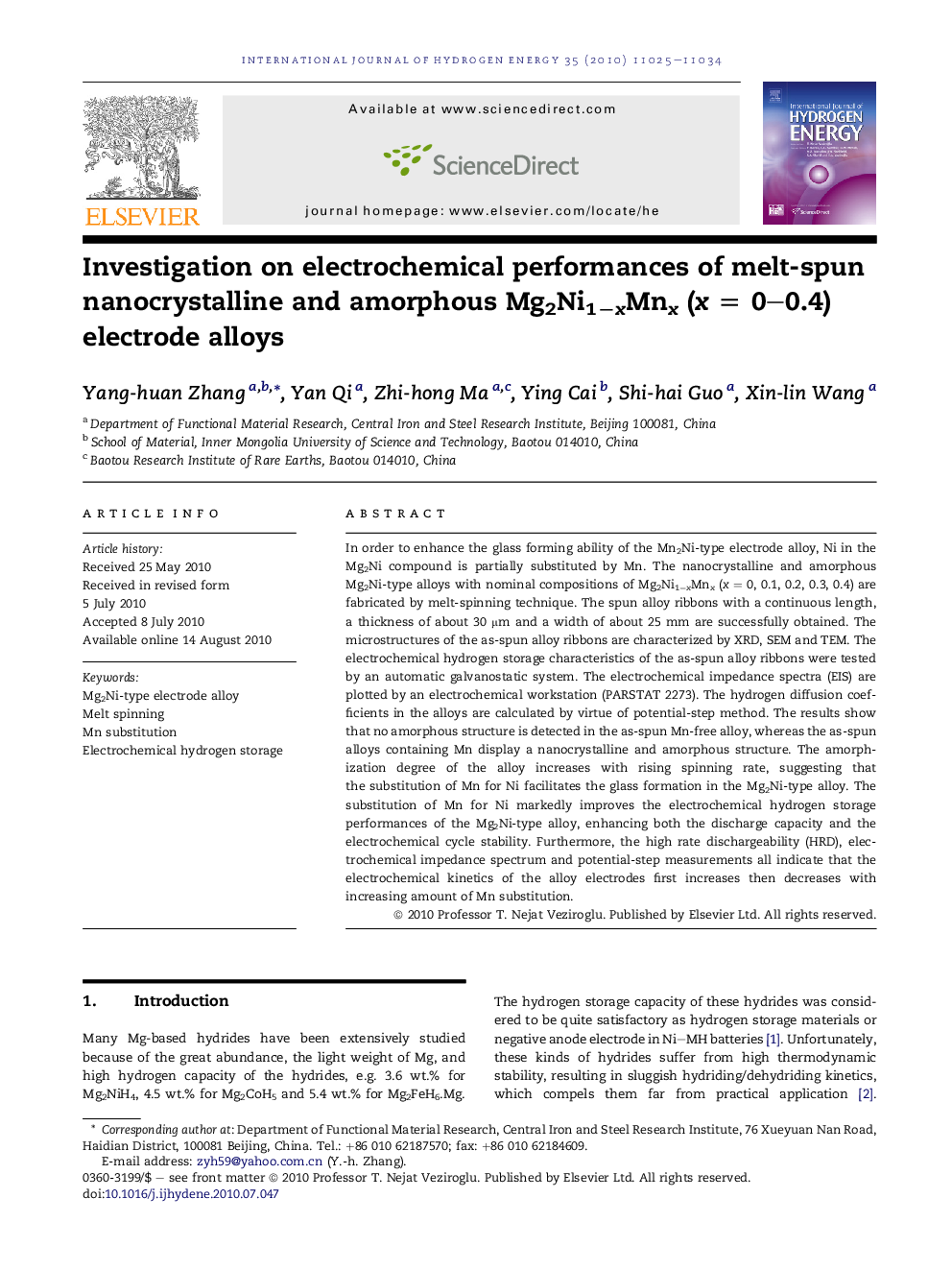| Article ID | Journal | Published Year | Pages | File Type |
|---|---|---|---|---|
| 1276699 | International Journal of Hydrogen Energy | 2010 | 10 Pages |
In order to enhance the glass forming ability of the Mn2Ni-type electrode alloy, Ni in the Mg2Ni compound is partially substituted by Mn. The nanocrystalline and amorphous Mg2Ni-type alloys with nominal compositions of Mg2Ni1−xMnx (x = 0, 0.1, 0.2, 0.3, 0.4) are fabricated by melt-spinning technique. The spun alloy ribbons with a continuous length, a thickness of about 30 μm and a width of about 25 mm are successfully obtained. The microstructures of the as-spun alloy ribbons are characterized by XRD, SEM and TEM. The electrochemical hydrogen storage characteristics of the as-spun alloy ribbons were tested by an automatic galvanostatic system. The electrochemical impedance spectra (EIS) are plotted by an electrochemical workstation (PARSTAT 2273). The hydrogen diffusion coefficients in the alloys are calculated by virtue of potential-step method. The results show that no amorphous structure is detected in the as-spun Mn-free alloy, whereas the as-spun alloys containing Mn display a nanocrystalline and amorphous structure. The amorphization degree of the alloy increases with rising spinning rate, suggesting that the substitution of Mn for Ni facilitates the glass formation in the Mg2Ni-type alloy. The substitution of Mn for Ni markedly improves the electrochemical hydrogen storage performances of the Mg2Ni-type alloy, enhancing both the discharge capacity and the electrochemical cycle stability. Furthermore, the high rate dischargeability (HRD), electrochemical impedance spectrum and potential-step measurements all indicate that the electrochemical kinetics of the alloy electrodes first increases then decreases with increasing amount of Mn substitution.
Research highlights► A nanocrystalline and amorphous structure can be obtained in the Mg2Ni1−xMnx (x = 0, 0.1, 0.2, 0.3, 0.4) alloys by using a melt spinning technology. The substitution of Mn for Ni facilitates the glass formation in the Mg2Ni-type alloy.► Both the melt spinning and the substitution of Mn for Ni evidently improve the electrochemical hydrogen storage performances of the Mg2Ni1−xMnx(x 0, 0.1, 0.2, 0.3, 0.4) alloys, enhancing the discharge capacity and the cycle stability.► The high rate discharge ability (HRD) of the as-cast Mg2Ni1−xMnx (x = 0, 0.1, 0.2, 0.3, 0.4) alloy electrodes always grows with rising the amount of Mn substitution, whereas for the as-spun alloy electrodes, it first increases then decreases with the incremental variation of Mn content.
